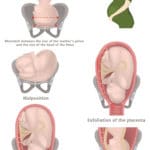What is catarrh?
Catarrh is an abnormally increased buildup of phlegm or mucous in the airway, nose, throat and /or paranasal sinuses which is associated with inflammation of the mucous membranes. The word Catarrh is derived from the Greek word ‘Katarrhein’ which means ‘to flow down’.
In local parlance, when someone says he/or she has catarrh, what comes to mind is buildup of mucous in the nose which may block the nostril(s) and makes it difficult for the person to breathe through the nose.
Inflammation of mucous membranes of different parts of the respiratory tract have specific names by which they are described but the word “catarrh” is a not specific to any structure of the airway. Inflammation of the mucous membrane of the nasal cavity is referred to as rhinitis, inflammation of the pharynx- pharyngitis, inflammation of the larynx- laryngitis and so on. The suffix ‘-itis’ connotes inflammation (redness/swelling/pain).

Description of the airway (respiratory tract)
This section describes the airways and other structures that are not part of the airway that form a conduit for passage of oxygen to the lungs but are in close proximity to the airways. The airway is the pathway through which oxygen inhaled when we breathe gets to the lungs for onward distribution to the rest of the body.
The respiratory tract begins from the nasal cavity (nostrils/nares) which is the inner part of the nose. This is continuous with a pipe-like structure(pharynx) which connects nasal cavity to the wind pipe or trachea. The pharynx has different parts connected to the nasal cavity and the mouth. The larynx is the next structure after the pharynx.
The larynx closes off the entrance to the windpipe when you swallow so that food particles don’t enter your airway and cause you to choke. After the larynx is the trachea or wind pipe which divides into two to form the left and right bronchi and then bronchioles and alveoli. The upper respiratory tract consists of the nasal cavity to the upper larynx while the lower respiratory tract is from the lower larynx to the lungs.
Other structures in close relation to the airway are the sinuses, tonsils, vocal cords and the Eustachian tubes. Sinuses are spaces in the skull that make your skull lighter in weight and plays a role in sound creation (voice) and how the voice sounds. Sinuses are lined by mucous membranes and are connected to the nasal cavity, therefore they can become easily inflamed if there is an inflammation in the nasal cavity. The tonsils are on either side of your throat very close to the pharynx hence it easily gets swollen, red and painful when there is inflamed pharynx. Vocal cords or the voice box helps us to produce sounds and is closely related to the larynx.
This is the reason your voice becomes hoarse when you have laryngitis. The Eustachian tube is a tube that makes a connection between the ear and nasal cavity. Build-up of mucous in the nasal cavity may enter into the Eustachian tube and get to the ear to cause infection. The Eustachian tube is bent in such a way that mucous from nasal cavity does not easily enter it and this is maintained by different pressures between the nasal cavity and the Eustachian tube. Ear infection from an upper respiratory tract infection is more common in children because of the straight orientation of the Eustachian tube.
Types of catarrh
Catarrh is of two types: Acute and chronic
Acute catarrh is of sudden onset and lasts a few days, usually resolves within 7 to 10 days. It may start when exposed to irritants such as dust, fumes or strong smells.
Chronic catarrh lasts for several days to weeks. It usually begins as acute catarrh but lasts much longer. In chronic catarrh, the individual continues to feel dripping of mucous at the back of the throat and in some cases congestion of the nostrils for several days to weeks.
What causes catarrh?
Catarrh is caused by infection in the upper respiratory tract, most commonly viral. Irritants, allergens and cold air may also cause catarrh.
Viral infections of the upper respiratory tract most commonly caused by rhinovirus or influenza virus (the flu) are usually self-limiting meaning they resolve spontaneously. Common cold or corhyza is characterized by more of runny nose and is less severe than ‘the flu’ which is more severe and associated with more of nasal blockage/congestion. In cases where the infection becomes complicated by infection of other structures, or a bacterial infection, then the need for treatment with antibiotics would arise. The body’s response to infection is what causes the symptoms of this disease.
Abnormal sensation or feeling in the mucousa of the pharynx may also be a cause of chronic catarrh.
What are symptoms of Catarrh?
Symptoms of catarrh depend on the type of catarrh. Acute catarrh starts usually with runny nose. Other symptoms include
- Nasal stuffiness
- Discomfort in the throat
- Sneezing
- Inability to perceive smells
- Feeling of fullness in the ears
- Headache
- Change in voice (nasal voice)
- Dry cough
- Fever (in children with common cold and adults who have the flu)
- Body aches
- Chronic or complicated catarrh is characterized by
- Painful swallowing (sore throat)
- Post nasal dripping of mucous
- Nasal congestion lasting several weeks
- Poor appetite
- Body weakness
- Tonsillitis
- Otitis media
- Catarrh may also be complicated by lower respiratory tract infections (pneumonia).
What does catarrh look like?
Acute catarrh discharge is initially watery, a little bit slimy and colourless. It may later become whitish and thick slimy (mucoid). Eventually the discharge turns yellowish/greenish thicker and starts to dry up, appearing as crusts in the nasal cavity.
How do you get catarrh?
The viruses that cause catarrh are airborne therefore you can get catarrh by close contact with an infected person. You can also get catarrh if you touch surfaces where an infected person has touched and touch your face afterwards without washing your hands.
Exposure to allergens such as pollen, dust, animal dander and irritants may also cause catarrh. Exposure to cold air may cause catarrh.
How is catarrh diagnosed
The diagnosis of catarrh is a clinical diagnosis based on history of symptoms and examination findings. However, tests to confirm diagnosis such as skull X-ray or Computed tomography(CT) scan of the paranasal sinuses may be requested by your doctor.
Catarrh treatment and home remedies
Acute catarrh of viral origin usually resolves spontaneously without any drug treatment. Since there is an increased fluid loss when a person has catarrh, hydration with more fluids and rest are the mainstay of treatment. However, some home remedies such as steam inhalation, mint and/or ginger tea may be soothing for the sufferers of the condition.
Antihistamines and vitamin C may help to reduce the duration but are not curative. The use of saline drops especially for nasal congestion may be helpful.
When catarrh becomes complicated by bacterial infections then antibiotics may be prescribed to treat the bacterial infection. Antiviral drugs have not been found useful in the treatment of catarrh.
Prevention of catarrh
- Avoid contact with infected people.
- Frequent hand washing
- Avoid touching your face often
- Use facemask when around people with acute catarrh
- Influenza vaccine
- Avoid allergens and irritants.




